Unlock the potential of your career in the Pharma industry with our online courses and qualifications.
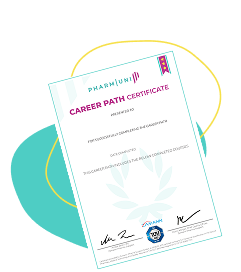
Pick a career path, follow its guided course roadmap, and secure industry-verified credentials in a few months.
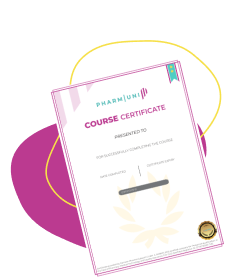
Earn career credentials from industry leaders that demonstrate your expertise.
Master EU-GVP & ICH-E2B drug-safety skills — 100 % self-paced.
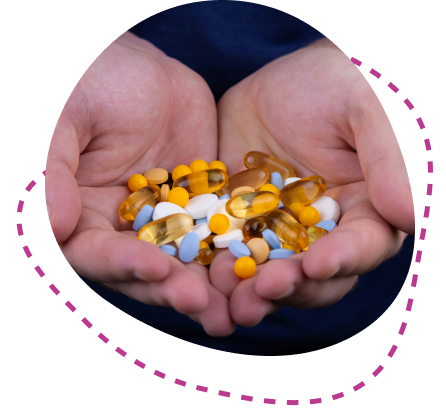
Build drug-safety expertise with Pharmuni’s ISO-9001 e-learning platform. Our self-paced Pharmacovigilance modules span PV fundamentals, safety-database case processing, and risk-signal management. Earn an industry-recognised certificate — start free and unlock every course for under €40/month.
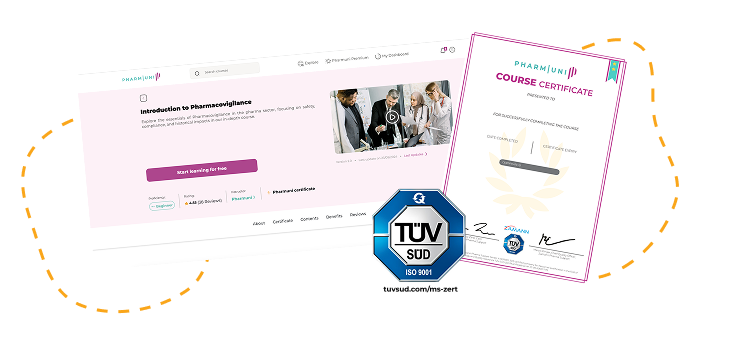
Safeguard patients, satisfy regulators, secure your future.
5% of hospital admissions in Europe are caused by adverse drug reactions
25M+ safety reports in the EMA’s EudraVigilance database
Regulators now require real-time compliance from pharma companies
Global pharmacovigilance market to exceed $11.8B by 2030
One of the fastest-growing skill gaps in pharma (Europe & North America)


Explore the essentials of Pharmacovigilance in the pharma sector, focusing on safety …
Learn drug safety principles, regulatory frameworks, and global compliance standards.

Learn about the Pharmacovigilance System, including identifying safety information…
Gain hands-on experience in case processing, signal detection, and risk management planning using real-world scenarios.
Pharmuni Premium turns learning into a career path with 50+ courses, AI tools, and career coaching to get you hired.
50 + expert-led pharma courses & quizzes
Industry-recognised certificates issued under an ISO-9001 quality system
Monthly VIP career coaching
AI-powered Skill Tree
Pharma-focused résumé & cover-letter builders
Mobile-friendly, 100 % self-paced platform
Gain instant access to every Pharmuni program—covering GMP, Pharmacovigilance, Quality Management, Manufacturing, Supply Chain, IT Validation, Professional Skills and more—built by Zamann Pharma Support’s ISO-9001-certified team. One affordable, self-paced plan gives you unlimited learning, quizzes and certificates on any device.
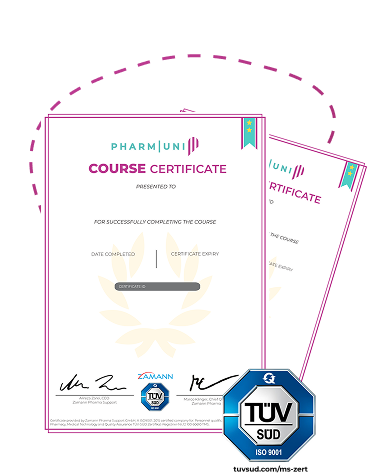
Earn an industry-recognised certificate under Zamann’s ISO 9001-certified system — with a one-click validation badge to prove your GMP or pharmacovigilance expertise to employers.
With decades of combined project experience across validation, digitalization and risk management—Our mother company, Zamann, keeps each course aligned with the latest compliance expectations.

Every certificate reflects real-world compliance expectations — not generic online learning.
Built by Zamann’s senior auditors, QA leads, and CSV engineers — the same specialists trusted by global pharma clients.
Backed by Zamann’s decades of project experience in validation, digitalization, and risk management, ensuring courses stay current.
Developed under strict GMP, EMA, ICH guidelines, inside an ISO 9001-certified quality system.
Book in two clicks from your dashboard and connect by phone or video at your convenience.

Pharmacovigilance Specialist, Regulatory-Affairs Associate, GxP Auditor, and more
Learn in order, track progress, switch roles anytime, and watch your skills and opportunities grow.



Pharmuni Premium gives you 50+ industry-aligned courses, credentials, VIP coaching, job tools trusted by professionals and more—for less than the cost of a single in-person training session.
Monthly: €39.99/mo
Annual: €33.25/mo (Save €80.88 yearly)
(most popular with immigrants)
We use cookies to improve your experience on our site. By using our site, you consent to cookies. Privacy Policy
Manage your cookie preferences below:
Essential cookies enable basic functions and are necessary for the proper function of the website.
These cookies are needed for adding comments on this website.
Google Tag Manager simplifies the management of marketing tags on your website without code changes.
These cookies are used for managing login functionality on this website.
Statistics cookies collect information anonymously. This information helps us understand how visitors use our website.
Google Analytics is a powerful tool that tracks and analyzes website traffic for informed marketing decisions.
Service URL: policies.google.com
Clarity is a web analytics service that tracks and reports website traffic.
Service URL: clarity.microsoft.com
Marketing cookies are used to follow visitors to websites. The intention is to show ads that are relevant and engaging to the individual user.
Facebook Pixel is a web analytics service that tracks and reports website traffic.
Service URL: www.facebook.com
LinkedIn Insight is a web analytics service that tracks and reports website traffic.
Service URL: www.linkedin.com
You can find more information in our Privacy Policy and Privacy Policy.